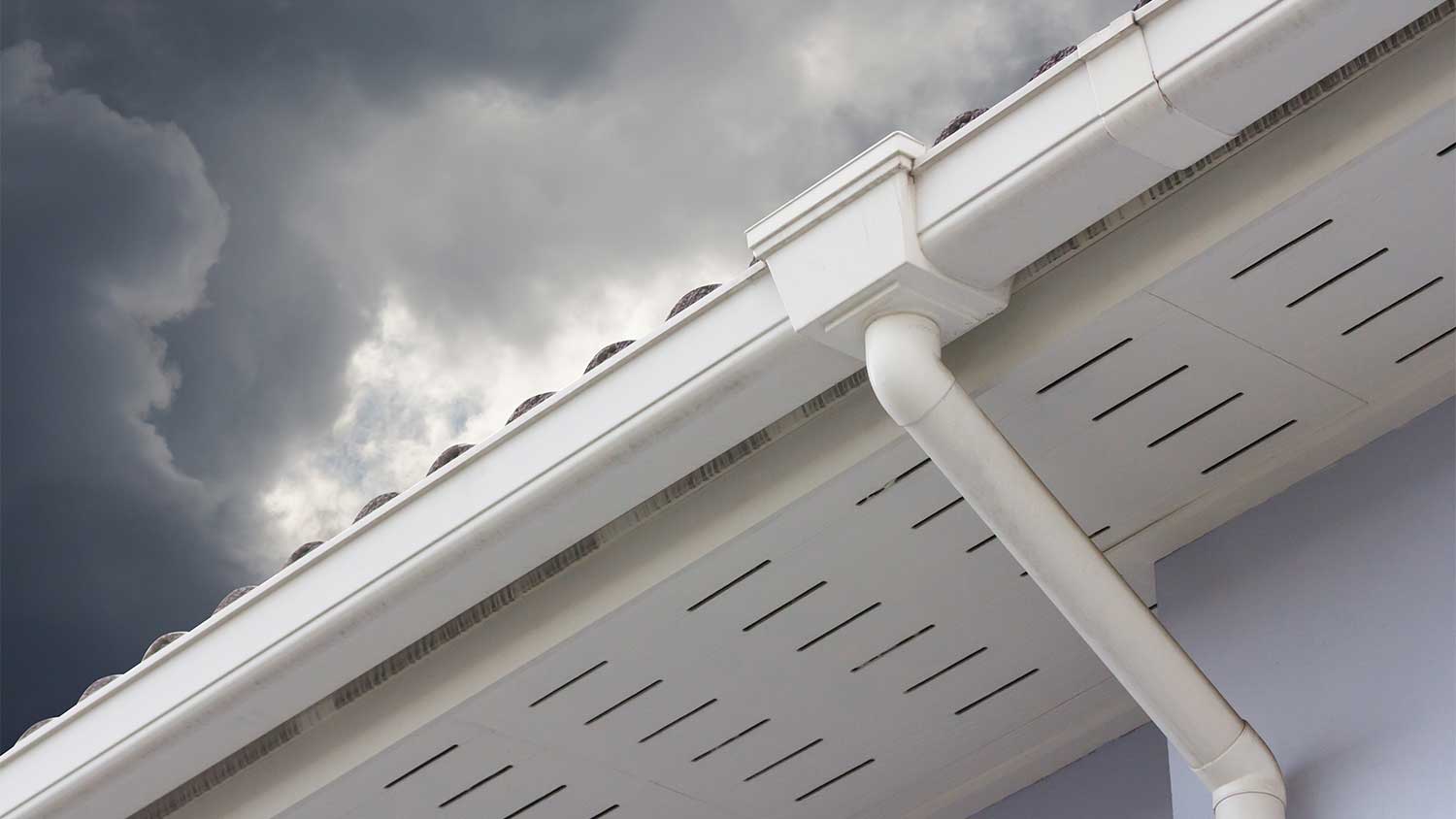7 Benefits of Installing Rain Barrels for Your Home
Watching the rain spill out of the gutter is that much better with a rain barrel


The average U.S. family uses 320 gallons of water per day.
30% of residential tap water goes to outdoor use.
You can save around 1,300 gallons of water in the summer with a rain barrel.
It costs around $120 to $160 to buy a rain barrel.
If you’ve ever sat by the window to watch the rain cascading down and then checked your rain gauge afterward, you’ll love just how exciting it can be to capture larger quantities of water and use it in your yard. Using a rain barrel to collect fresh, free rainwater can save money and energy and protect the environment. Here are seven benefits to using residential rain barrels.
1. Rain Barrels Conserve Water
Ditch the tap water and take advantage of the water savings you get when you install a rain barrel on your property. Rain barrels store gallons of water that can water your plants. WaterSense, a program run by the United States Environmental Protection Agency (EPA), estimates that a typical U.S. family uses around 320 gallons of water a day, and 30% of that water is used on the great outdoors, with over 50% of outdoor water use going to watering the yard.
Yard irrigation makes up around 9 billion gallons of water a day across the country, which is almost 1/3 of water used by residents. That’s a lot of water! By capturing rainwater to water your garden and lawn, you can save approximately 1,300 gallons of water in the summer.
2. Rain Barrels Save You Money
Speaking of lowering your use of tap water, tapping into rainfall is free. Rain barrels cost between $120 and $160 on average, and once the expenses are over, all you have to do is dispense the water from the barrel and water your garden.
Since you can save around 1,300 gallons in just the summer, and the average cost of tap water is $2 per 1,000 gallons, you can potentially save $5 to $10 per year, depending on rainfall and yard usage.
3. Rain Barrels Are Easy to Use

Rain barrels don’t require any major installations. Simply connect a hose to the spigot, and use it just like a regular hose while gravity provides pressure to empty the water. Barrels are suitable for most outdoor uses, including watering flowers or the lawn, washing the car, or even giving your pet a bath. The water can also top off a swimming pool, though it might be more acidic and may require you to check your pool more frequently.
Note that you’ll want to avoid rainwater harvesting from wood shingles, cement, and terra cotta tiles for your pool, as these can leach pollutants like lead, copper, arsenic, and more into your pool. If you’re open to a downspout alternative, installing a rain chain is a great way to incorporate rain barrels into your yard.
4. Rain Barrels Reduce Water Runoff
Every gallon that goes into a rain barrel is a gallon that doesn’t go racing down the asphalt into storm sewers, streams, or rivers. This effectively decreases river flooding, property runoff, and sewer overflows, helping to prevent pollutants like fertilizer, animal waste, and other debris from entering waterways and harming the plants and animals that live there.
5. Rain Barrels Prevent Erosion
Reduced water runoff also means that less water is pelting the soil, eroding susceptible erosion zones. Coastal and freshwater shorelines play a major role in the ecosystem. When erosion occurs, it causes many shoreline erosion problems; plants get washed away, animals lose their habitat, and houses can even crumble. Preventing flooding through the use of rain barrels can help stave off flood damage to shorelines.
6. Rainwater Is Better for Plants
If you’ve noticed that your garden looks extra vibrant after rain, even when you adamantly water your garden with tap water, there’s a reason for that. The extra rainwater for gardens and lawns is useful during periods of restricted water usage, and it’s better for plants than chlorinated city water.
In fact, rainwater contains a nutrient called nitrate, which is an easy form of nitrogen for plants to absorb. Nitrogen is a key macro-nutrient for plants, and tap water has minimal quantities of nitrates.
7. Rain Barrels Are Easy to Get
Some communities offer rainwater barrels at reduced rates. Check with places that you might not think of, such as a car wash company, animal supply company, dairy farm, or food processing plant to see if they have any barrels they’re willing to give away or at a discount. You can also purchase a ready-made rain barrel or a do-it-yourself kit online or at a local home improvement store.
Since rainwater barrels are so versatile and easy to obtain, rainwater tanks come in all kinds of shapes and sizes to suit your needs. If you live in a location that has little space for rainwater collection, consider investing in a small, 50-gallon stormwater tank. If you have a lot of land, you might want a larger, 100-gallon rain harvesting tank.





- Types of Rain Barrels [2024 Guide]
- 9 Tips for Landscaping Around Your House to Prevent Flooding
- 15 Wise Ways to Prevent Water From Flooding Your Yard
- Make a Splash With These 8 Outdoor Water Conservation Tips
- All the Pros and Cons to Harvesting Rainwater
- How to Reduce Sewer Bills: 12 Easy Ways to Save Big
- Top 12 Gutter Drainage Solutions and Tips
- The Ultimate Guide to Droughts: Before, During, and After
- 10 Florida-Friendly Landscaping Tips
- How to Fix a Soggy Lawn: 18 Tips for a Yard You’ll Love










